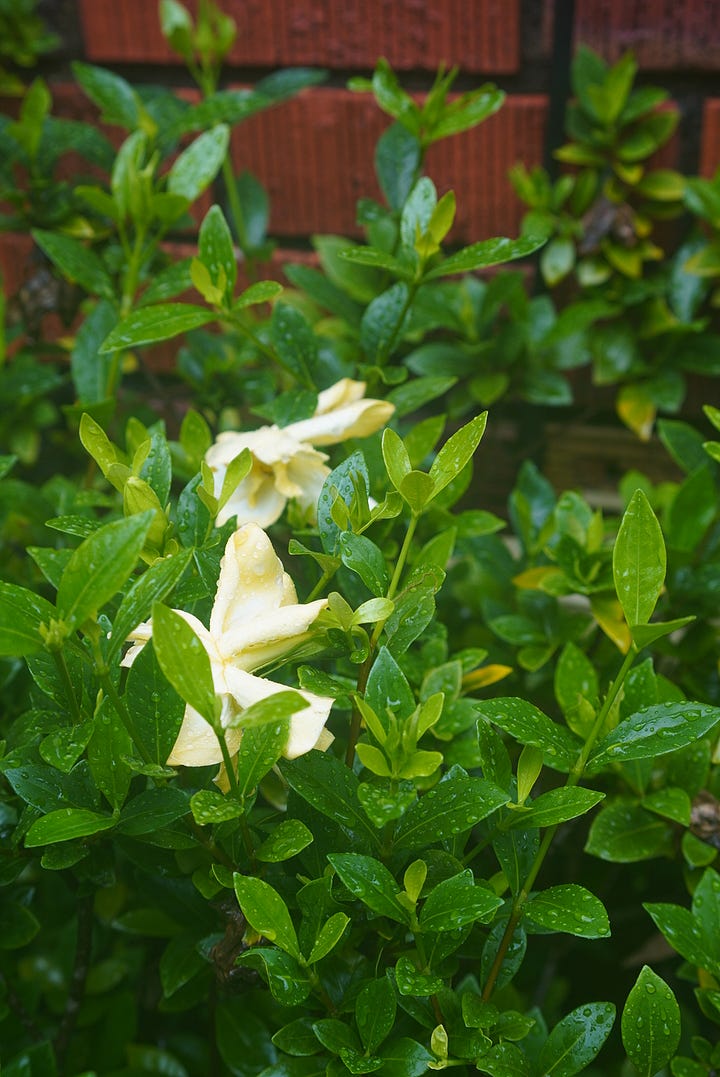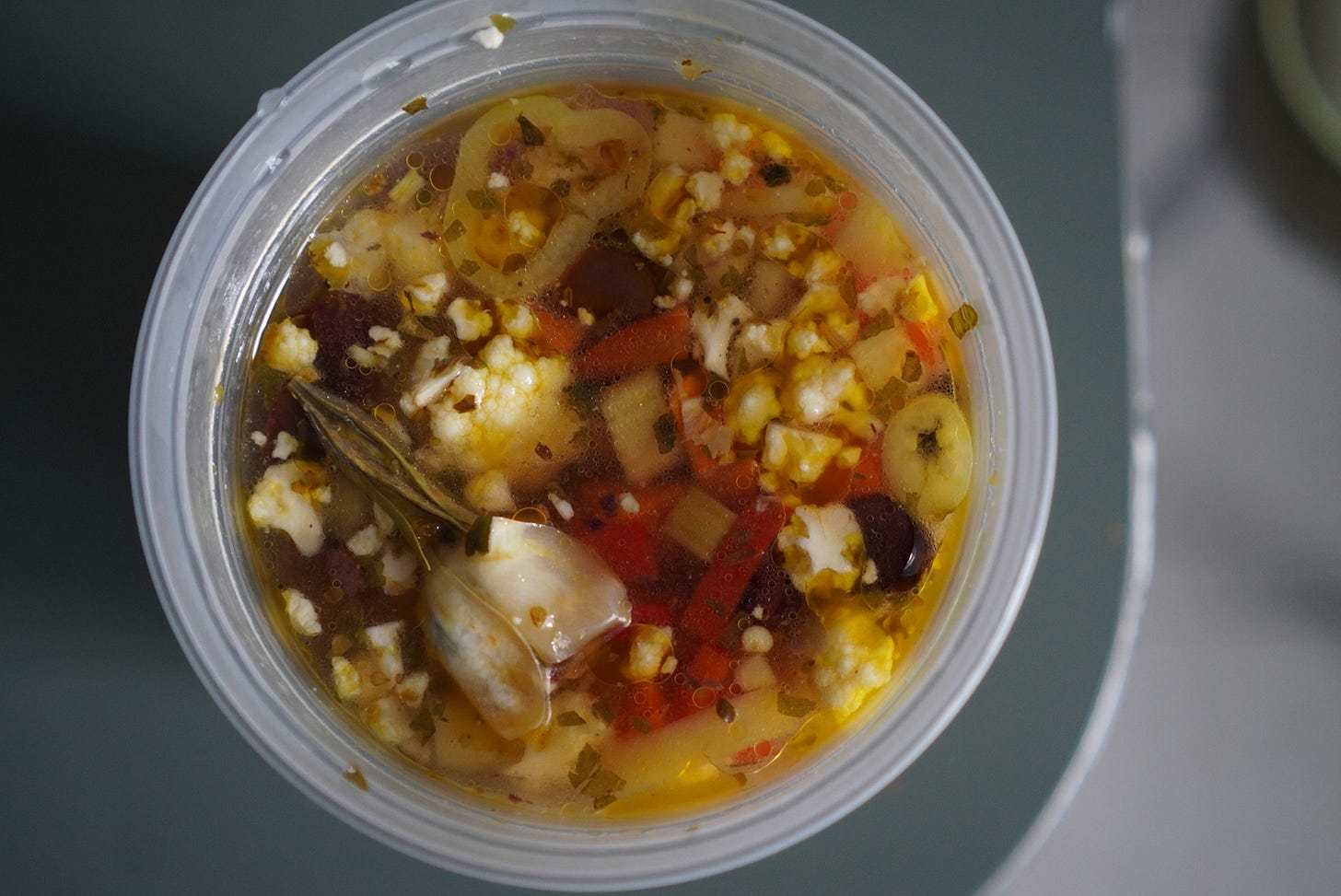We were at a party, a birthday party, admiring the table of snacks and hors d'oeuvres when a waiter approached and began to explain the components of an elaborate charcuterie display: soppressata, capicola, manchego. He paused then, suddenly unsure. “And that’s gardenia,” he said, pointing to what could only be giardiniera.
Giardiniera, the quintessential pickled Chicago condiment (by way of Italy), made from sport peppers, cauliflower, and carrots—roughly chopped, then submerged in oil and seasoning.
Acidic, tangy, delicious.
Two years prior, my husband and I moved from Chicago back to my hometown of Savannah, the coastal Georgia city revered for its drippy Spanish moss and cobblestone streets. We’d spent well over a decade in the frigid Midwest, building our careers in hospitality, and, like many others, the pandemic ushered in a desire for something different.
Goodbye, we said to our West Loop apartment and our favorite restaurants—the subterranean burger spot up the street, the wine bar where we had our first date, the fancy steakhouse, where we ordered extra dirty gin martinis. Goodbye to late-night tamales, Beijing duck, and Italian beefs topped with beautiful, spicy giardiniera.


Giardiniera—not to be confused with gardenia, an evergreen shrub with delicate white, aromatic flowers that wilt when you so much as breathe on them. I grew up in a house where wild gardenias bloomed in the backyard. It was my mother’s favorite flower. When my husband and I moved into our first house (as in, not an apartment) last October, I didn’t realize the bushes in the yard were gardenia until the flowers bloomed in the summer—after the azaleas, camellias, and jasmine had all taken their turn.
Giardiniera is not a familiar condiment in the American South, though the gardenia is a well-known flower. Long before gardenias were first planted in the South in the 1700s, they were flourishing in South Africa and throughout Southeast Asia. For centuries, the Chinese have utilized the gardenia, or the zhi zi’s, fruit, roots, leaves, seeds, and blossoms for medicinal purposes.
All of which is to say, the gardenia is edible—and it's good for you. This, I did not know until I started thinking about gardenias in the context of giardiniera. And while I’ve yet to see someone using the gardenia flower on a menu or serving it at a dinner party, the possibilities remain.
As it turns out, gardenia giardiniera goes great on top of hot-honey pepperoni pizza. Drizzle a hefty portion over shredded beef, or mix it into a hearty pasta salad. The gardenia, when added whole, looks dramatic and pretty, suspended there in a sea of vinegar, as if it can’t be bothered.
Original recipe by my husband, Andrew Brochu:
Gardenia Giardiniera
Veggies
100g cauliflower (small florets)
50g carrot (small dice)
50g onion (small dice)
50g celery (small dice)
35g red pepper (small dice)
15g red fresno (thin sliced rings)
15g kalamata olive (sliced rings)
15g castelvetrano olives (sliced rings)
Brine
200g H2O
20g salt
200g olive brine
Combine brine in a mixing bowl and whisk until salt is dissolved. Pour over the veggies and let sit in the refrigerator for 4-6 hours. Strain off brine.
Pickle
5g minced garlic
5g minced ginger
1g dried oregano
1g dried basil
400g H2O
200g white wine vinegar
15g salt
Bring the pickle to a boil and add 5g of whole gardenia flowers to the mix. Steep for 10 minutes, then strain hot pickle over the veggies. Let sit in the cooler for a minimum of 48 hrs.
Use as needed for a condiment on anything and everything.




